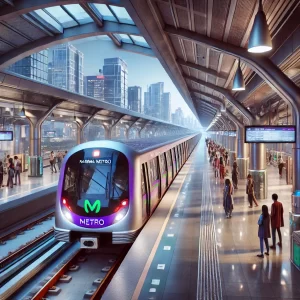Bangalore’s metro system, known as Namma Metro, has been a game-changer for urban transport in the city. As India’s Silicon Valley continues to grow, the metro is helping reshape how people move around — here’s how:
? 1. Reducing Traffic Congestion
Bangalore’s infamous traffic jams are getting some relief thanks to the metro. With more people choosing the metro over personal vehicles, roads are becoming less clogged, especially on key routes like MG Road, Whitefield, and Electronic City.
? 2. Eco-Friendly Travel
The metro runs on electricity, cutting down carbon emissions and offering a greener alternative to petrol and diesel vehicles. This shift is crucial for a city battling rising pollution levels.
? 3. Boosting Connectivity to Business Hubs
The metro connects major IT corridors, commercial zones, and residential areas, making commutes faster and easier for professionals. The newly extended Purple Line now links Whitefield — a major tech hub — directly to the city center, saving hours of travel time.
?? 4. Transforming Real Estate
Areas near metro stations are booming, with property values rising and new businesses setting up shop. This is creating more vibrant, accessible neighborhoods across the city.
? 5. Cutting Down Travel Time
A journey that once took 2 hours by road now takes less than 45 minutes by metro. The convenience of bypassing traffic is encouraging more people to ditch their cars and bikes.
? 6. Multi-Modal Integration
Namma Metro integrates with buses, autos, and even cycle-sharing services at key stations, promoting seamless last-mile connectivity. The introduction of smart cards and QR-based ticketing also simplifies the commuting experience.


